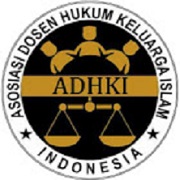Editorial Workflow
Editorial Workflow
The editorial workflow of AHKAMUL USRAH: Journal of Family Law and Islamic Judiciary is designed to ensure a thorough, fair, and efficient review process for all submitted manuscripts. Below is an outline of the steps involved from submission to publication:
1. Submission
- Manuscript Submission: Authors submit their manuscripts through the journal’s online submission system.
- Initial Check: The editorial team performs an initial review to check for adherence to the journal's submission guidelines, including formatting and length requirements.
2. Editorial Assessment
- Editorial Evaluation: The editor-in-chief assesses the manuscript's relevance and originality, determining whether it fits within the journal's scope.
- Plagiarism Check: The manuscript is screened for plagiarism using designated plagiarism detection software. Manuscripts that exceed the acceptable similarity index will be flagged for further evaluation.
3. Peer Review
- Reviewer Selection: The editor selects two to three qualified reviewers with expertise in the relevant field to provide an objective assessment of the manuscript.
- Review Process: Reviewers evaluate the manuscript based on its originality, significance, methodology, and overall contribution to the field. Reviewers provide constructive feedback and recommendations for improvement.
- Review Duration: Reviewers are typically given [insert standard time frame, e.g., 2-4 weeks] to complete their assessments.
4. Editorial Decision
- Decision Communication: After receiving feedback from the reviewers, the editor makes a decision regarding the manuscript. Possible decisions include:
- Accepted: The manuscript is accepted for publication with minor or no revisions.
- Revise and Resubmit: The authors are invited to make revisions based on reviewer feedback and resubmit the manuscript for further evaluation.
- Rejected: The manuscript is not suitable for publication in its current form.
5. Revisions
- Author Revisions: If the manuscript is sent for revision, authors have [insert time frame, e.g., 2-3 months] to make necessary changes and resubmit.
- Final Review: The revised manuscript is reviewed again, either by the original reviewers or the editor, to ensure that the authors have adequately addressed all comments.
6. Final Acceptance and Publication
- Final Acceptance: Once the manuscript meets all criteria and revisions are satisfactory, it is formally accepted for publication.
- Copyediting and Proofreading: The accepted manuscript undergoes copyediting to ensure clarity and consistency. Authors receive proofs for final review and approval before publication.
- Publication: The article is published in the next available issue of the journal and made accessible to readers.
7. Post-Publication
- Indexing and Archiving: The published article is indexed in relevant databases and archived for long-term access.
- Author Notifications: Authors are informed of the publication date and provided with links to their published articles for sharing and promotion.
This editorial workflow is designed to uphold the integrity of the peer-review process while facilitating timely and efficient publication of high-quality research. AHKAMUL USRAH is dedicated to promoting scholarly discourse in the field of family law and Islamic judiciary.












